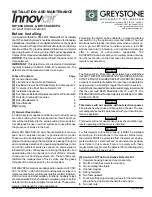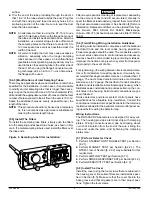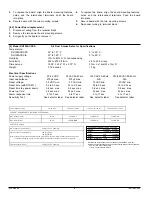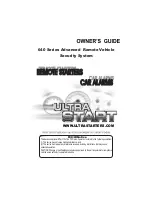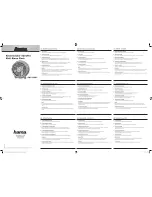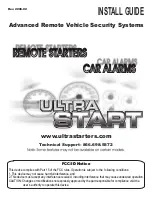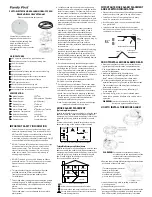
[6] Duct Smoke Detector Maintenance And Test Pro-
cedures
Test and maintain duct detectors as recommended in NFPA
72. The tests contained in this manual were devised to as-
sist maintenance personnel in verification of proper detector
operation.
Before conducting these tests, notify the proper authorities
that the smoke detection system will be temporarily out of
service. Disable the zone or system under test to prevent
unwanted alarms.
[6.1] Smoke Entry Tests
[6.1.1] Air Flow
To verify sufficient sampling of ducted air, use a manometer to
measure the differential pressure created from air flow across
the sampling tubes. The pressure should measure no less than
0.03 inches of water and no greater than 1.4 inches of water.
The air handler must be operating for this test.
[6.1.2] Smoke Response
To determine if smoke is capable of entering the sensing
chamber, visually identify any obstructions. Plug the ex-
haust and inlet tube holes to prevent ducted air from carrying
smoke away from the detector head, then blow smoke such
as cigarette, cotton wick, or punk directly at the head to
cause an alarm. REMEMBER TO REMOVE THE PLUGS
AFTER THIS TEST, OR THE DETECTOR WILL NOT FUNC-
TION PROPERLY.
[6.1.3] Filter Replacement
The filters do not substantially affect smoke performance
even when up to 90% of the filter is clogged. Quarterly visual
inspection usually suffices to determine whether the filters
should be replaced because only a high percentage of con-
tamination affects performance. If further testing is required,
compare differential pressure readings with and without the
filters installed. If the difference exceeds 10% replace the fil-
ters. In no case should the pressure differential fall below
0.03 inches of water.
[6.2] Standby, Alarm, And Sensitivity Tests
[6.2.1] Standby And Trouble
Standby — Look for the presence of the flashing green
LED through the transparent housing cover.
The LED should flash approximately every 10
seconds.
Trouble —
If the detector LED does not flash, then the
detector lacks power (check wiring, panel, or
power supply), the detector board is missing
(replace), or the unit is defective (return for re-
pair)
Test —
The trouble condition can be caused inten-
tionally to verify correct operation of the sys-
tem. Remove the detector board to cause a
trouble condition locally and at the system
control panel.
Cover
Tamper —
If the cover is removed for a period longer than
20 minutes, a trouble signal is generated to
indicate the cover is missing.
[6.2.2] Alarm Tests
[6.2.2.1] M02-04-00 Magnet Test
1. Place the painted surface of the magnet onto the TEST
locator on the bottom of the housing (Figure 11).
2. The red alarm LED on the detector should latch on, as
should any accessories (i.e. RA400Z, RTS451). Verify
system control panel alarm status and control panel ex-
ecution of all intended auxiliary functions (i.e. fan shut-
down, damper control, etc.).
3. The detector must be reset by system control panel, front
cover reset button, or remote accessory.
D100-68-00
5
I56-1525-000

